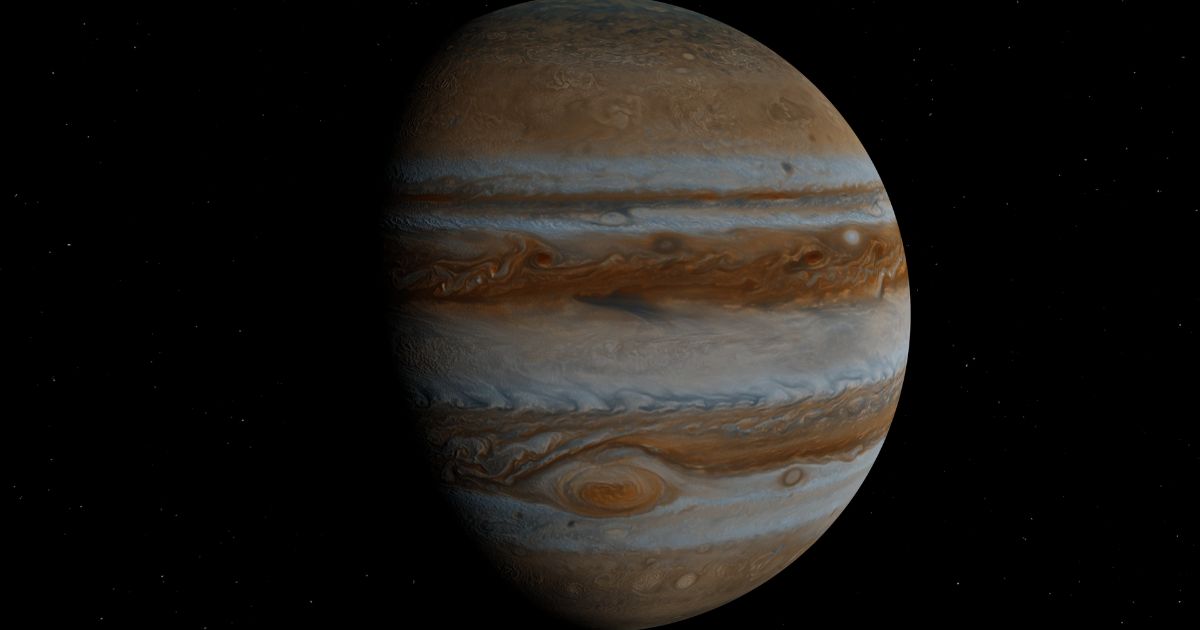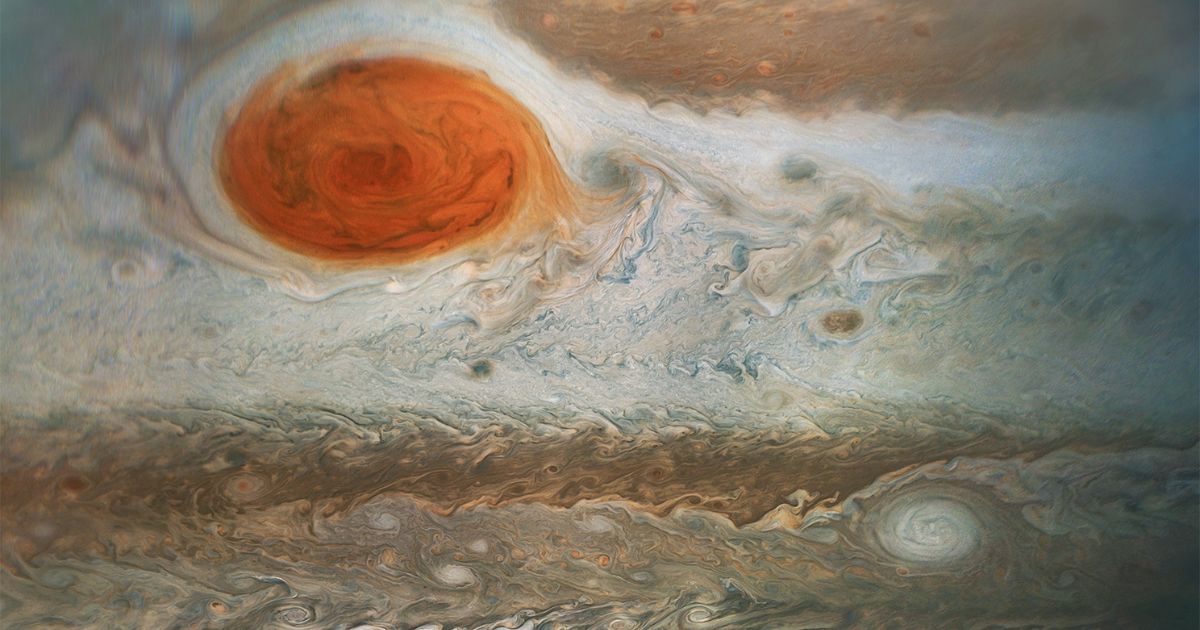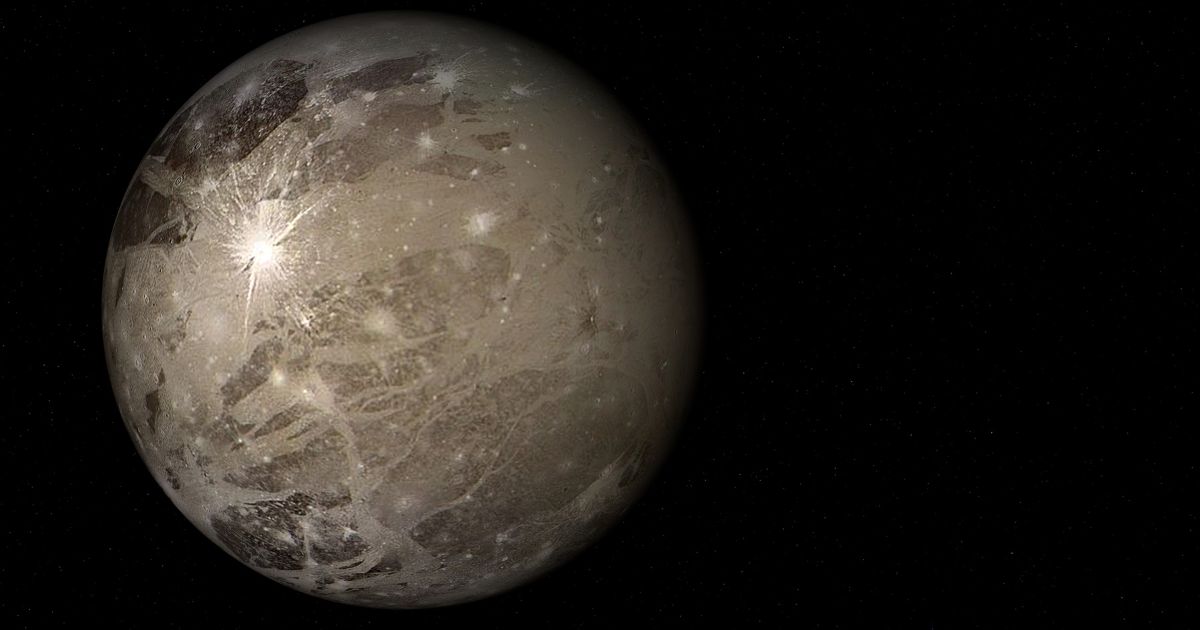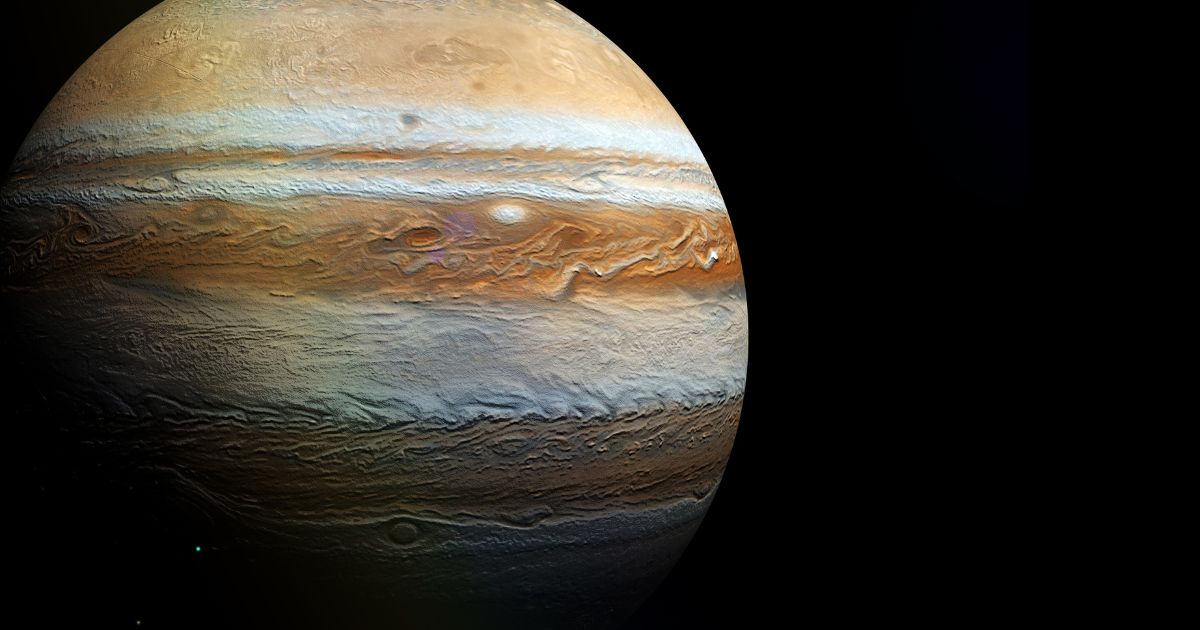Jupiter, the largest planet in the solar system, is a magnificent gas giant that interests both astronomers and space enthusiasts. It is known for its different colored clouds, Great Red Spot, and immense size. It’s many moons, along with the Galilean moons, further contribute to this remarkable planet. Want to know more? Check out these fun facts about Jupiter.

Image of Jupiter in Space
50 Insane Facts About Jupiter
Jupiter is the biggest planet in the solar system.
Its gravity is about 2.5 times greater than Earths. So if you weigh 100 pounds on Earth, you would be about 250 pounds on Jupiter.
This also means time is slower on Jupiter, only about 20 nanoseconds so it wouldn’t feel different.
The planet Jupiter is so big that 1,300 Earths could fit inside it.
Jupiter is the 5th planet from the Sun.
The average distance from the Sun and Jupiter is 484 million miles (778 million kilometers).
It is the closest gas giant to the Sun.
Jupiter is the only planet that doesn’t technically orbit the Sun. Because it is so far away and it is so massive, Jupiter and the Sun orbit a point just outside of the Sun. All the other planets orbit a point inside the Sun.
Because it is a gas giant, humans are unable to walk on Jupiter.
Jupiter’s atmosphere is mostly made of hydrogen (75%) and Helium (24%).
Jupiter has one of the most famous atmospheres, made out of an assortment of colorful bands.
It is banded due to the speed and direction of the wind about its atmosphere.
The average wind speed is about 300 mph.
It also has the thickest atmosphere out of all the planets.
The planet is named after the king of the Roman gods.
One of the few planets that is visible to the naked eye.
It is the third brightest object in the night sky, after Venus and the moon.
Jupiter has a diameter of 86,881 miles, or 139,820 kilometers.
1 day on Jupiter lasts just under 10 hours. This means it is the fastest spinning planet.
This rapid rotation causes Jupiter to bulge at its equator and flatten at its poles.
It takes Jupiter about 12 Earth years to orbit the Sun.
It has the strongest magnetic field, which is 14 times stronger than Earth’s.
This magnetic field generates beautiful auroras at its poles.
The most famous aspect of Jupiter is its red spot, a massive storm that has been raging for the last 400 years.
This storm is so big that 3 earths could fit inside it.
The storm fluctuates in size as time goes by.
The red spot was first observed in 1665, meaning it has been raging for at least 358 years.
The reason why it is red is still unknown.

Up-Close Image of Jupiter’s Infamous Red Spot
Jupiter has 79 known moons, the second most out of any planet.
The four largest moons are known as the Galilean moons.
They are Io, Europa, Ganymede, and Callisto.
Ganymede, the largest of the four, is the largest moon in the solar system and is also bigger than planet Mercury.
Io is the most volcanically active object in the solar system.
Io is also the object with the least amount of water in the entire solar system.
Europa has a surface full of ice.
This means that it is the most likely candidate for life, as scientists speculate a salt-water ocean under its ice sheet.
Although Jupiter is unable to house life, its moons are thought to be potential candidates for water, and thus life.
Like Saturn, Jupiter has a ring system.
These rings are super faint and are made of dust particles.
The dust particles were thrown into orbit from asteroids and comets colliding with its moons.
Jupiter is so massive that its gravity affects the orbits of the other planets in the solar system.
It is so hard for spacecraft to explore Jupiter because it experiences intense radiation.
In 1979, the Voyager 1 and 2 spacecraft flew past Jupiter, providing us with close up images and data.
In addition to these probes, a few others have visited Jupiter, including the Galileo and Juno missions.
Jupiter emits more heat than it receives from the Sun, suggesting an internal core.
Jupiter only tilts 3 degrees, meaning seasonal change is minimal.
Jupiter is often referred to as Earth’s bodyguard. This is because it has such a strong force of gravity that it helps protect Earth from comets or asteroids.
Jupiter has the largest ocean in the solar system. It is made of liquid hydrogen.
Jupiter emits radio waves that are detectable from Earth.
Jupiter is a failed star. The nuclear fusion process never occurred so it stayed as a planet.

Jupiter’s Moon, Ganymede
Frequently Asked Questions; Learn More About Jupiter!
How Many Moons Does Jupiter Have?
Jupiter has 79 confirmed moons, which is the second most in the solar system after Saturn. Most of these moons are extremely small but there are 4 major moons known as the Galilean moons. They are Europa, Io, Callisto, and Ganymede. Some of these moons are even being investigated for life forms.
Does Jupiter Have Rings?
Yes, Jupiter does have rings but they are nowhere near as spectacular as Saturn’s. The planet has 4 major rings that are made of dust particles. They are very faint and difficult to see but they are still there. Scientists believe that they were formed due to collisions that occurred between asteroids and Jupiter’s moons.
How Far is Jupiter from Earth?
Jupiter is about 484 million miles from Earth, on average. The distance is always changing due to the difference in the orbits between the two planets.
How Big is Jupiter?
Jupiter is by far the largest planet in the solar system. Jupiter has a diameter of 86,881 millions miles, which is almost 11 times that of Earth’s! After the sun, Jupiter is the next largest object in the solar system. All planets combined could fit inside Jupiter, it’s that big!
What Color is Jupiter?
Jupiter has all sorts of colors, it’s mostly a yellowish brown but it is also red, black, white, brown, and orange. Its atmosphere changes colors due to the different direction and speed of the winds throughout its atmosphere.
What is Jupiter Made Of?
Jupiter is a gas giant so it is made of gas. Jupiter’s atmosphere is primarily hydrogen (75%) and Helium (24%). Its solid core is also made of hydrogen and helium but in liquid form.
How did Jupiter Get its Name?
Jupiter was named after the Roman king of the gods. This is because it is the largest of all the planets.
Does Jupiter Have a Solid Surface?
The simple answer is no, Jupiter does not have a solid surface and humans would not be able to walk on it. This is because it is a gas giant and is made mostly from Hydrogen and Helium. Due to its thick atmosphere and clouds, scientists are unsure if Jupiter has a core or not. However, it emits more heat than it receives, leading to the assumption that it does have a solid core.
What is Jupiter’s Red Spot?
Jupiter’s red spot is a massive storm that is almost 3 times the size of Earth. It is just like storms here on Earth, meaning it produces lightning. The storm has been raging since Jupiter was first observed. However, it has been shrinking ever since, meaning it may not be a permanent storm after all.

Image of Jupiter’s Unique, Layered Atmosphere
Our mission has ended, space explorers! Jupiter has and will continue to wow scientists and astronomers alike. Its mysteries will continue to be unveiled as we gather further information on its atmosphere, red spot, rings, and moons. Stay curious!
Want to learn more about the planets in our solar system? Check out these other articles:

Leave a Reply